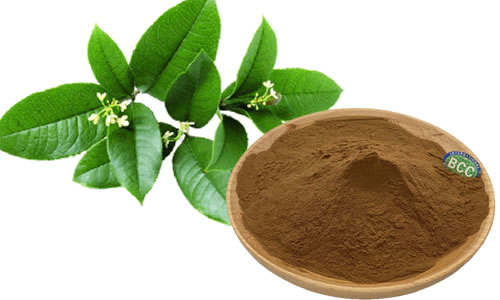Green tea extract (tea polyphenol 98%)
[product name]: green tea extract
[English name]: Tea Polyphenol
[extract part]: leaf
[property]: Brown, light yellow or light green powder
[product specification]: 50% - 98%
[test method]: HPLC
[shelf life]: two years
[package description]: double plastic bag plus cardboard barrel (25kg / barrel)

[introduction to green tea extract]:
Tea polyphenols is the general term of polyphenols in tea, including flavanols, anthocyanins, flavonoids, flavonols and phenolic acids. Among them, flavanols (catechins) are important. Tea polyphenol, also known as tea tanning or tannin, is one of the main components of tea color and fragrance, and also one of the main components of tea with health care function. Camellia sinensis is rich in tea polyphenols.
[chemical composition of green tea]:
Polyphenols: including flavanols (catechins), 4- hydroxyflavanols, flavonoids, anthocyanins and phenolic acids. Flavanols are the main part of polyphenols, accounting for about 80%, including catechin (c), epicatechin (EC), epigallocatechin (EGC), epigallocatechin gallate (ECG), epigallocatechin gallate (EGCG), a small amount of catechin gallate (CG), gallocatechin (GC), etc. Flavonoids include quercetin, kaempferol, flavonol gallic acid ester, etc.
Anthocyanins: anthocyanins, chlorophyll, lutein, carotene, etc.
Alkaloids: mainly caffeine (1% - 5%) and a small amount of theophylline, theobromine, xanthine.
Triterpenoids: theasapogenol e, theafolisaponin, etc.
protein and amino acid: theanine, phenylalanine, glutamic acid, hydrolase, protease, phosphorylase, oxidoreductase, etc.
Sugar: cellulose, starch, pectin, etc.
Aromatic substances: heptanol, heptanaldehyde, cyanohydrin, benzyl alcohol, etc.
[main components of green tea extract]:
The content of tea polyphenols in green tea is high, accounting for 20% ~ 30% of the dry weight of tea
[preparation method of green tea extract]:
Later, new methods were developed. Add 150 m l deionized water to 100 ml concentrated solution in the proportion of 1:1.5 respectively and stir for water sedimentation to remove chlorophyll and oil, respectively, and move them into the refrigerator for overnight storage. Transfer the supernatant, continue vacuum concentration until the volume is halved, and get the concentrated solution again. The product can be obtained by transferring it into a separating funnel and extracting it with ethyl acetate for several times. After the solvent is recovered by decompressing the extraction liquid, the product can be obtained by vacuum pumping into dry powder. This process has the advantages of low cost, non-toxic and pollution-free, and higher yield than the traditional process.